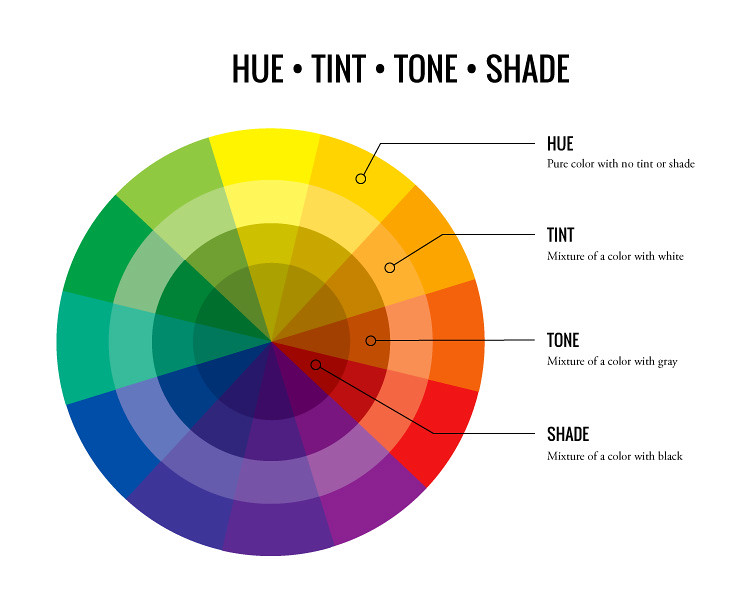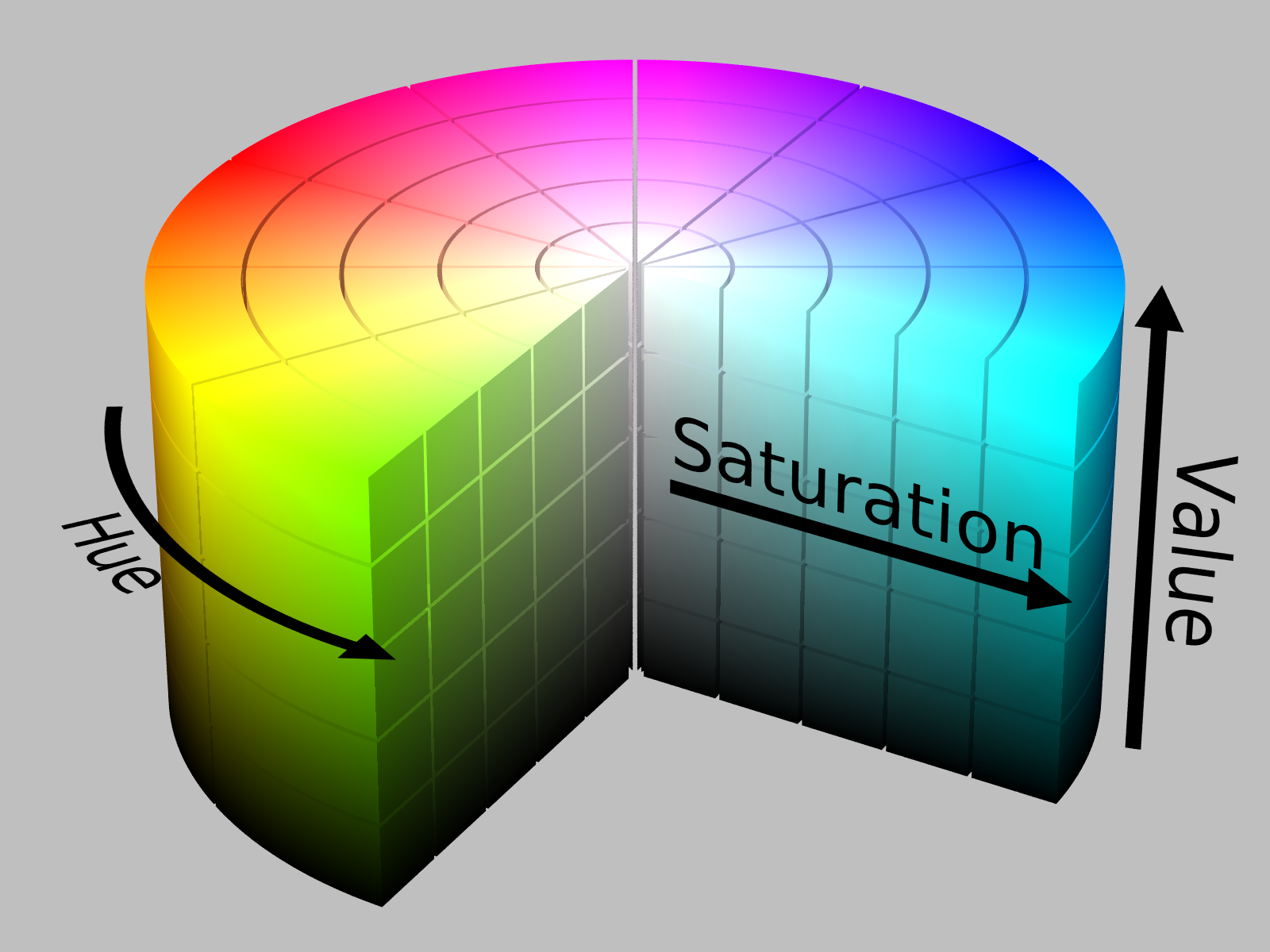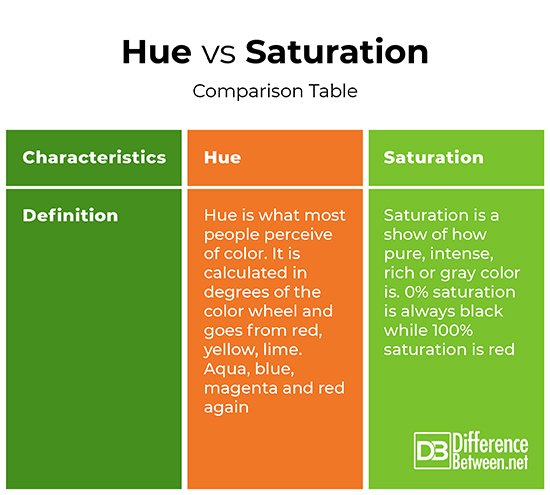Difference Between Hue and Saturation
Among the major RGB colours representation is the use of HSL, Hue, Saturation and Lightness. What is the importance of defining colors according to Hue, Saturation and Lightness? You may ask. Defining colors in terms of HSL is more intuitive as opposed to defining the colors according to the common color names. Let’s talk about the difference between Hue and Saturation.

What is Hue?
Hue is what most people perceive of color. It is calculated in degrees of the color wheel. A color wheel goes from red, yellow, lime. Aqua, blue, magenta and red again. As such, 0 degrees hue is red and at the same time, 360 degrees hue is red. Hue is different. As such, the hue observed depends on the wavelength of light being produced or reflected. Also, people perceive color differently. This means that the hue that one person sees can be different from the hue that another person sees.

What is Saturation?
This is a show of how pure, intense, rich or gray color is. 0% saturation is always black while 100% saturation is red. Always, when the full saturation is used, the pure base hue is used. Also, when at 100% saturation, this is an indicator that there is no addition of Gray and that the color is completely pure. The more, saturation, the brighter the color becomes. For someone who wants brighter colors, a higher saturation is required.
Similarities between Hue and Saturation
- Both are major RGB color representations
Differences between Hue and Saturation
Definition
Hue is what most people perceive of color. It is calculated in degrees of the color wheel and goes from red, yellow, lime. Aqua, blue, magenta and red again. On the other hand, saturation is a show of how pure the hue is. 0% saturation is always black while 100% saturation is red.
Hue vs. Saturation: Comparison Table

Summary of Hue vs. Saturation
Hue is what most people perceive of color and is calculated in degrees of the color wheel. It goes from red, yellow, lime. Aqua, blue, magenta and red again. On the other hand, saturation is a show of how pure, intense, rich or gray color is. 0% saturation is always black while 100% saturation is red.
- Difference Between Profit Center and Investment Center - July 2, 2022
- Difference Between Anti-Trust and Anti-Competition - June 6, 2022
- Difference Between Stocktaking and Stock Control - June 6, 2022
Search DifferenceBetween.net :
Leave a Response
References :
[0]United States. National Bureau of Standards. National Bureau of Standards Circular, Issues 469-479. U.S. Department of Commerce, National Bureau of Standards. https://books.google.co.ke/books?id=lxd5wOdv2AsC&pg=RA8-PA31&dq=Difference+between+Hue+and+Saturation&hl=en&sa=X&ved=2ahUKEwj5p7TFiszwAhVLi1wKHbm2A6gQ6AEwAHoECAQQAg#v=onepage&q=Difference%20between%20Hue%20and%20Saturation&f=false
[1]https://www.chinesestandard.net. GB/T 2374-2017: Translated English of Chinese Standard (GBT 2374-2017, GB/T2374-2017, GBT2374-2017): Dyestuffs - General Rules for Dyeing Test. https://www.chinesestandard.net, 2017. https://books.google.co.ke/books?id=eb4zDwAAQBAJ&pg=PA12&dq=Difference+between+Hue+and+Saturation&hl=en&sa=X&ved=2ahUKEwj5p7TFiszwAhVLi1wKHbm2A6gQ6AEwBHoECAEQAg#v=onepage&q=Difference%20between%20Hue%20and%20Saturation&f=false
[2]Josef Albers. Interaction of Color: 50th Anniversary Edition. Yale University Press, 2013. https://books.google.co.ke/books?id=A_MYU_XDXfcC&printsec=frontcover&dq=Difference+between+Hue+and+Saturation&hl=en&sa=X&ved=2ahUKEwj5p7TFiszwAhVLi1wKHbm2A6gQ6AEwBXoECAAQAg#v=onepage&q&f=false
[3]Image credit: https://live.staticflickr.com/3698/14299692644_d4ea7cb48e_c.jpg
[4]Image credit: https://commons.wikimedia.org/wiki/File:HSV_color_solid_cylinder_saturation_gray.png
